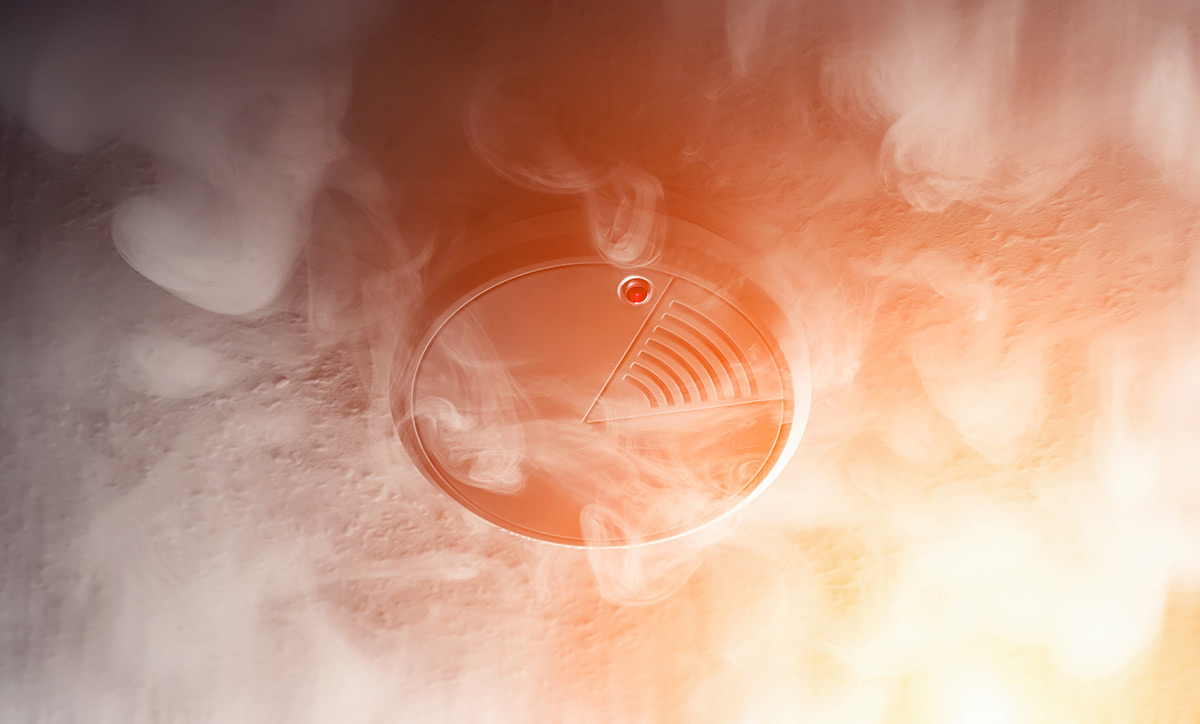We are going into the winter season and while we are spending more time in our homes, this makes us more vulnerable to multiple threats and how we can detect them. In the next series of blogs, we will investigate the different alarms, what they are for and what is the difference in them.
We will start with this one so when you change your batteries you can think about what best works for you. A fire is a serious threat to any home or business. It can start quickly and can spread rapidly, causing severe damage and loss of life. Installing a fire alarm system in your property is crucial to ensure your safety and those around you. However, with the various types of fire and smoke alarms available, choosing the right one becomes a challenge. In this blog post, we’ll discuss the different types of fire and smoke alarms and their differences.
Ionization Smoke Alarm
The ionization smoke alarm is the most commonly used type of smoke detector in residential properties. These alarms are effective in detecting fast, flaming fires but are less sensitive to slow-burning fires. The way they work is that they contain a small amount of radioactive material that ionizes the air inside the detector. In the event of smoke entering the alarm, the ionization causes a reduction in the flow of electrical current, activating the alarm.
Photoelectric Smoke Alarm
Photoelectric smoke alarms are better at detecting slow-burning fires that may smolder for hours before bursting into flames. These alarms use light to detect smoke, and unlike ionization detectors, they are less prone to false alarms. The way they work is that a beam of light is aimed at a sensor. If smoke enters the detector, it scatters the light, and the sensor activates, triggering the alarm.
Dual Sensor Smoke Alarm
A dual sensor smoke alarm combines ionization and photoelectric smoke detectors into one unit. This alarm is capable of detecting both fast-burning and slow-burning fires, making it a more comprehensive option for home safety.
Heat Detector
Heat detectors are sensors that detect rapid increases in temperature, typically above 135 degrees Fahrenheit. They are ideal for installing in garages, attics, or kitchens where smoke or dust may trigger false alarms. Heat detectors are used where there is a possibility of open fires, or where smoke alarms are not suitable.
Carbon Monoxide Detector
Carbon monoxide (CO) is a deadly gas that can be released from burning fuels such as gas, oil, wood, and coal. Carbon monoxide detectors are designed to detect CO levels in the air and warn people in the household of the potential danger. These detectors use sensors to measure CO levels and, when dangerous levels are detected, they trigger an alarm.
Choosing the right fire and smoke alarm for your property is vital for your safety. Each type of detector serves a different purpose, and it’s essential to understand the differences between them to make an informed choice. Whether you’re considering installing a smoke alarm, heat detector, or carbon monoxide detector, make sure to do your research and seek advice from professionals to ensure the safety and protection of you and your loved ones. Don’t compromise on safety – invest in the right fire and smoke detector today.

